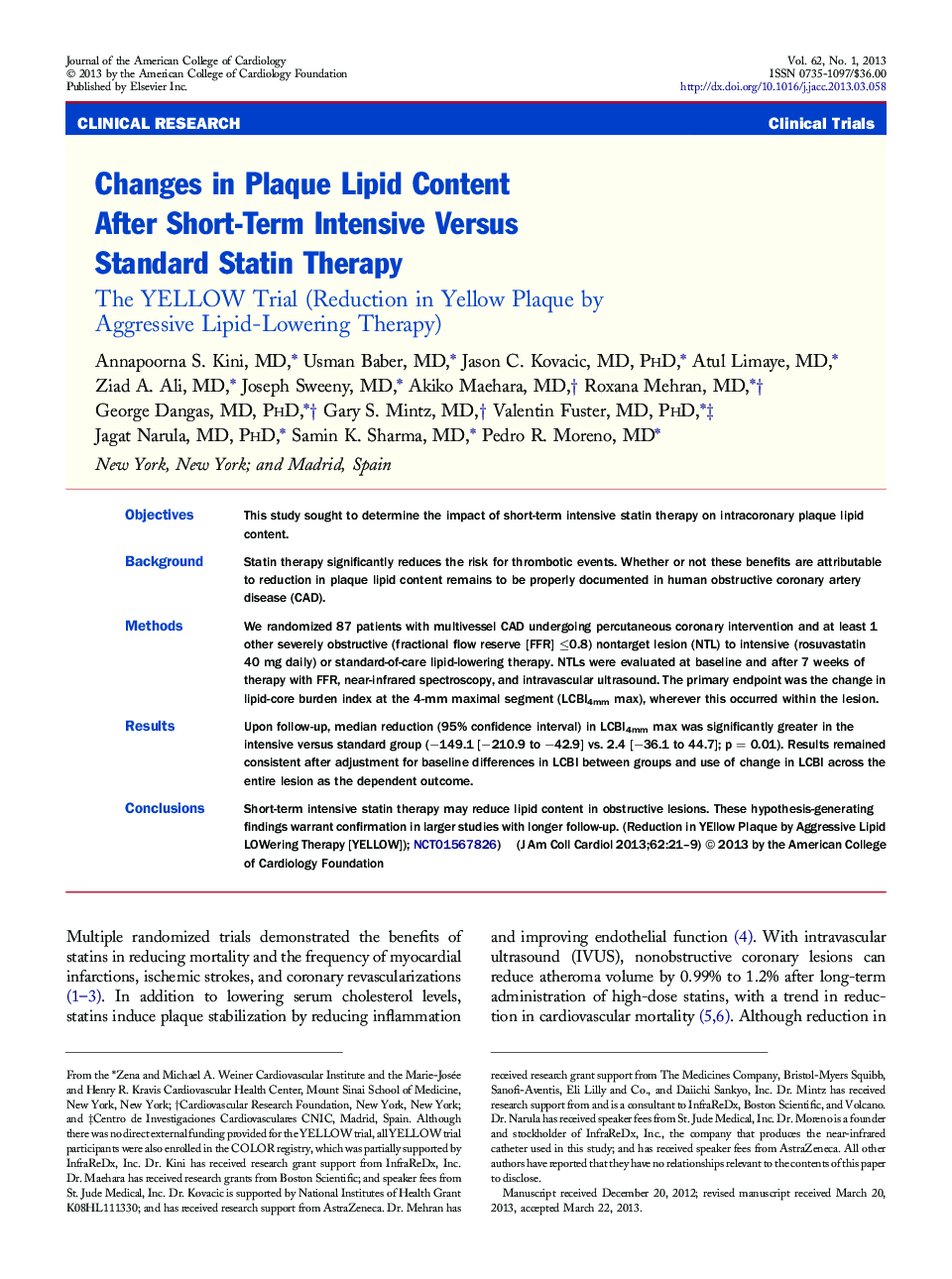| Article ID | Journal | Published Year | Pages | File Type |
|---|---|---|---|---|
| 2947629 | Journal of the American College of Cardiology | 2013 | 9 Pages |
ObjectivesThis study sought to determine the impact of short-term intensive statin therapy on intracoronary plaque lipid content.BackgroundStatin therapy significantly reduces the risk for thrombotic events. Whether or not these benefits are attributable to reduction in plaque lipid content remains to be properly documented in human obstructive coronary artery disease (CAD).MethodsWe randomized 87 patients with multivessel CAD undergoing percutaneous coronary intervention and at least 1 other severely obstructive (fractional flow reserve [FFR] ≤0.8) nontarget lesion (NTL) to intensive (rosuvastatin 40 mg daily) or standard-of-care lipid-lowering therapy. NTLs were evaluated at baseline and after 7 weeks of therapy with FFR, near-infrared spectroscopy, and intravascular ultrasound. The primary endpoint was the change in lipid-core burden index at the 4-mm maximal segment (LCBI4mm max), wherever this occurred within the lesion.ResultsUpon follow-up, median reduction (95% confidence interval) in LCBI4mm max was significantly greater in the intensive versus standard group (−149.1 [−210.9 to −42.9] vs. 2.4 [−36.1 to 44.7]; p = 0.01). Results remained consistent after adjustment for baseline differences in LCBI between groups and use of change in LCBI across the entire lesion as the dependent outcome.ConclusionsShort-term intensive statin therapy may reduce lipid content in obstructive lesions. These hypothesis-generating findings warrant confirmation in larger studies with longer follow-up. (Reduction in YEllow Plaque by Aggressive Lipid LOWering Therapy [YELLOW]); NCT01567826)
